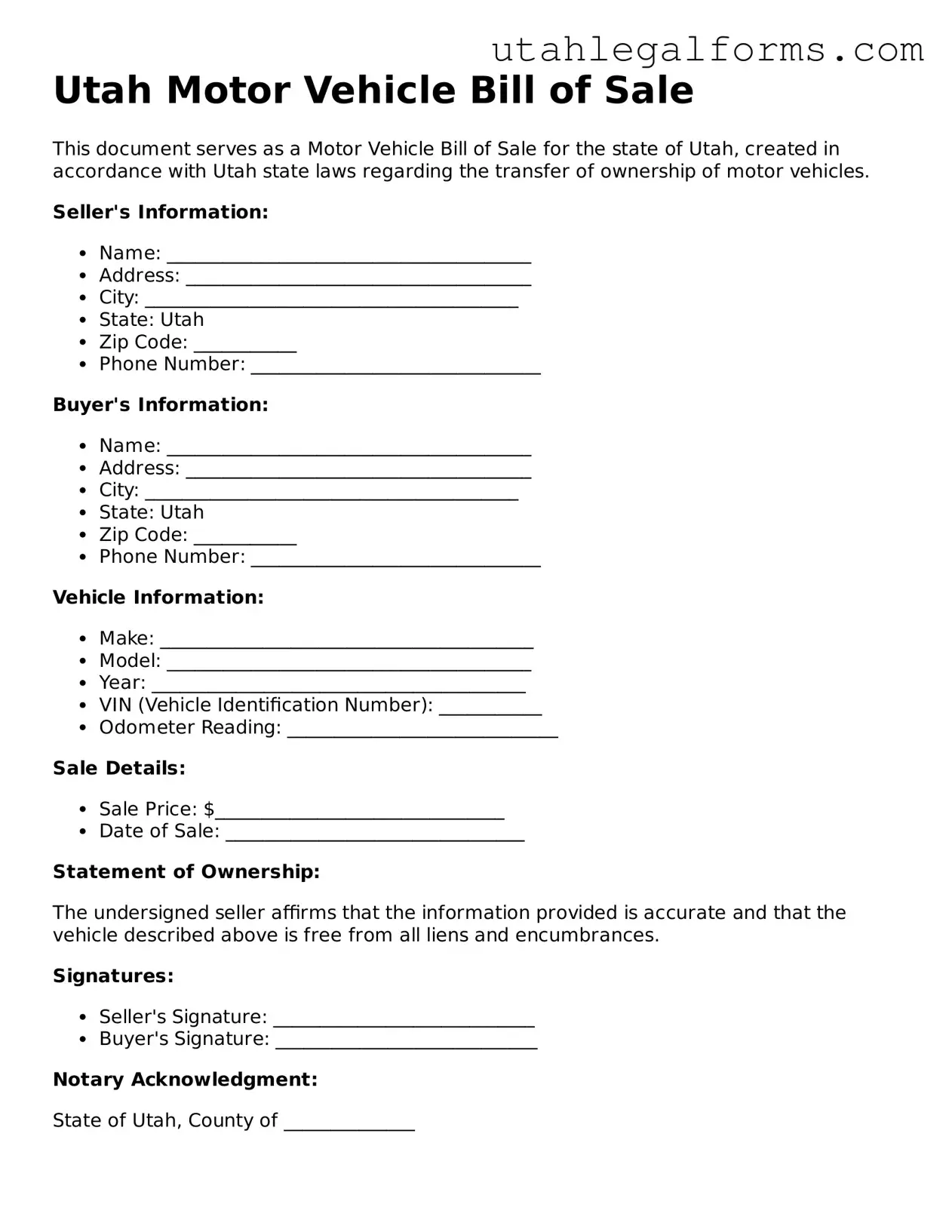Official Motor Vehicle Bill of Sale Form for Utah State
The Utah Motor Vehicle Bill of Sale form is a legal document that records the transfer of ownership of a vehicle from one party to another. This form provides essential details about the transaction, ensuring both the seller and buyer have a clear understanding of the terms involved. To facilitate a smooth transfer, it is crucial to fill out this form accurately; click the button below to get started.
Access Motor Vehicle Bill of Sale Now
